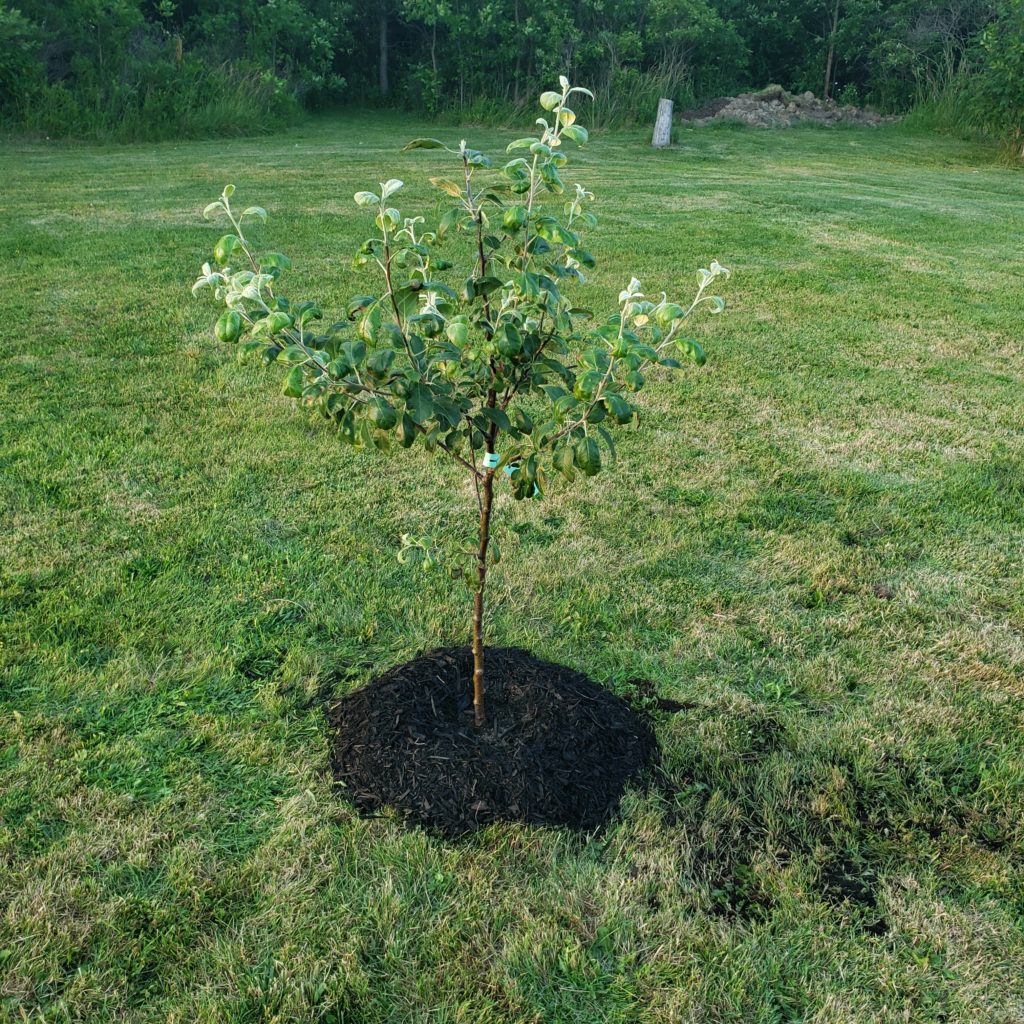As we bid goodbye to the warm, lush days of summer and gradually welcome the chilly breeze of winter, it’s important to turn our attention to our backyard orchards. Proper care and preparation are critical in securing the health and prosperity of our trees during this demanding season. This includes suitable techniques for pruning and protecting trees, efficient strategies for controlling pests, and essential steps for preparing the soil and optimizing fertilization. The impending seasonal transition may seem daunting, but fear not: our guide can prove instrumental in deciphering and implementing these crucial tasks.
Pruning and Protecting Trees
Mastering Winter Pruning: Securing the Health of Your Orchard Trees
Humming with the vibrant cycle of the seasons, orchards are among the most rewarding and fascinating microsystems nature has to offer. During winter, while your trees may seem to be sound asleep, they’re actually getting ready for the next blooming season, and a crucial aspect of their success lies in strategic winter pruning and protection. Let’s delve into practical ways to ensure your orchard flourishes, year after year.
For starters, pruning is an essential winter chore that prepares your apple, pear, peach, and other fruit trees for optimum growth in the coming spring. Understanding what to prune and when to prune ensures proper tree development, disease control, and superior fruit production.
- Timing Is Everything
- Be Equipped
- Identify What to Prune
- Make Proper Cuts
- Seal with Purpose
Generally, late winter (February to early March) is the perfect period for pruning. This is when the trees are dormant, and it’s easier to see and manage the tree’s structure before the buds swell and break open. It’s also less likely for disease organisms to infect pruning cuts during cold weather.
Ensure that you’re armed with the proper tools: a good quality pruning saw, sharp bypass pruning shears, and loppers. Remember, sharp tools result in cleaner cuts, which heal more quickly.
Think of pruning as giving your trees chiropractic adjustments; you’re helping them grow upright and balanced. Get rid of dead, dying, or diseased branches. Look for any branches that cross or rub against each other (known as ‘competing branches’), and choose the healthier one to stay. Prune overly vigorous vertical branches (referred to as ‘water sprouts’) and horizontal branches (tagged as ‘suckers’) growing at the base of the tree.
Always prune back to a bud or intersecting branch. Never leave a stub. Make your cut slope away from the bud to facilitate water runoff, and remember, the goal is to promote air circulation and light penetration.
Experts differ on the necessity of treating pruning cuts with sealing products. If you decide to use one, opt for a non-petroleum-based product. The primary goal is to keep diseases and pests out.
Now that pruning is done and dusted, let’s touch on some methods to protect your trees from frigid winter temperatures.
- Wrap for Warmth
- Mulch for Moisture
- Pest Control
To prevent sunscald (a condition caused by daytime thawing and night-time freezing of moisture on the tree trunk), wrap the trunk with a tree wrap or plastic tree guard. Start from the base going up to the lower branches.
Applying mulch, such as wood chips or straw, at the base of the trees helps conserve soil moisture, combat weed growth, and regulate soil temperature changes.
Pests view your dormant fruit trees as suitable winter homes. Using an organic dormant oil spray can help in eliminating these pests.
Embrace winter in your orchard with enthusiasm – it’s a season of preparation for the next cycle of growth. Pruning and protecting your trees is rewiring them for abundant fruit yields, healthier growth, and longer life. May the ripe, luscious fruits of your labor fill many a basket!

Pest Control Strategies
“Mastering the Art of Winter Pruning for Fruitful Harvests”
Purposefully pruning trees during the winter season is a remarkable craftsmanship that breathes life back into our barriers, sprouts, and pomes ringed with frost-bitten bark. This artistry ensures that our orchards stand tall during the wintry gales, keen on greeting the life-springing sun once the snow-laden clouds retreat.
Understanding the dynamics of pruning different orchard trees is fundamental in its practice. Pear trees, for instance, require less aggressive pruning than peach trees. Familiarizing oneself with the specific needs of various orchards significantly contributes to the yield and longevity of the trees.
Maintaining a watchful eye for hazardous falls in the orchard might be intuitive, but few understand the peril of crossing branches. These create a dense canopy impervious to sunlight and air circulation, while also instigating friction-caused tree wounds. Removing these seemingly harmless trespassers can dramatically improve the overall health and structural balance of the tree.
Consider thinning out some of the perfectly healthy branches too. While it may seem counterintuitive, thinning allows for better light penetration and air circulation, which propagates better fruit quality and reduced disease incidence. Again, knowledge on individual tree specifications is essential.
Of course, your tools must be as keen as your eyes. Secondary is the sharpness of the blades to the sterilization of your tools. Orchards are susceptible to diseases, and contaminated tools can transform an invigorating pruning session into a destructive spread of disease. A quick swish in a 10% solution of bleach between each cut can save your orchard a world of pain.
Let’s not forget about trunk protection. This often-overlooked practice can safeguard young trees from sunscald. Sunscald occurs because of drastic temperature swings, which causes the bark to crack and lose its protective function. A simple solution: paint the trunk with white latex paint in the cold months. This reflects sunlight and helps stabilize the temperatures within the bark.
Even though our orchards seem deep in slumber during the frosty winters, their roots are actively collecting water and nutrients from the soil beneath the snow. Applying slow-release fertilizers can provide the trees with their much-needed nourishment during this time. Note that not every soil type or climate benefits from winter fertilization. Always get your soil tested before routinely applying fertilizer.
Winter pruning and aftercare are not stand-alone processes. They’re intertwined with other year-round maintenance practices, creating a wholesome cycle of nurturing for your orchard. Whether soft fruits or elevated tree canopies, the art of winter pruning is an all-encompassing muse. With every thoughtful cut and protective brush stroke, we participate in the enchanting journey from bare winters to fruitful summers.
Soil Preparation and Fertilization
After the arduous work of pruning your orchard trees, it’s time to turn our attention to the grand stage where it all happens – the soil. Winterizing the soil and correctly fertilizing it are vital prerequisites for a fruitful harvest next year.
Firstly, let’s consider the soil preparation. What your orchard soil loves is the addition of compost. Great compost serves two roles. It not only enriches the soil but also regulates its temperature during those chilly winter months. Adding a 2-3 inch layer of compost over the soil surface around your trees around late fall will do wonders.
However, do take note that it’s crucial not to pile the compost against the trunk of the trees as this may invite pests or disease. It’s best to create a compost circle around the tree root, leaving a compost-free area at the base.
Watering the soil in the first stage of winterizing is also key. This might seem counterintuitive when you’re getting ready for cold weather, but remember that winter months are often dry. A good deep watering in late fall before the first frost is beneficial for the trees.
Now, let’s wade into the waters of fertilization. Developing and maintaining a healthy orchard requires a fertilizer with the right balance of nitrogen, phosphorus, and potassium, often referred to as NPK. It’s time to discuss the application of NPK fertilizer and other micronutrients.
Nitrogen (N) helps with overall growth and leaf development. While most trees require nitrogen to a certain extent, be careful not to overdo it. Excessive nitrogen can lead to excessive foliage and poor fruit production.
Phosphorus (P), on the other hand, enhances root development and improves fruit quality. This micronutrient can be mixed into the compost or added separately to the soil in late fall.
Potassium (K) improves overall plant vigor and disease resistance. Just like phosphorus, it can be mixed into the compost or added directly to the soil.
It’s recommended to have your soil tested to determine the exact NPK ratio required. This will help in choosing the correct type and amount of fertilizer for your orchard.
While NPK are the main components, don’t underestimate the role of micronutrients like magnesium, sulfur, and trace elements like boron, copper and zinc. These are equally necessary for a healthy orchard and can be added to the soil in the form of a complete orchard fertilizer.
Remember, when fertilizing, it’s crucial not to pile the fertilizer against the trunk of the trees. It should be spread evenly around the drip line (the area below the widest spreading branches).
Orchards are like our children, they need our constant nurturing and support. And the fruits of that labor (pun intended) are as rewarding as can be. As you prepare your orchard for winter remember, the key is a thorough soil prep with balanced fertilization. Good luck preparing your soil for winter – here’s to a bountiful harvest ahead!

Preparing your backyard orchard for winter is no easy feat, yet it is immensely rewarding. By dedicating time and effort to pruning and protecting your trees, deciphering pest habits to control their menace, and understanding your soil’s needs, you lay a foundation for a flourishing orchard come springtime. These skills are not only a means to an aesthetically pleasing garden but also nurture a healthier environment and, eventually, a bountiful harvest. With knowledge as your tool and nature as your canvas, you’re poised to navigate the harsh winter while setting your backyard orchard up for success.

